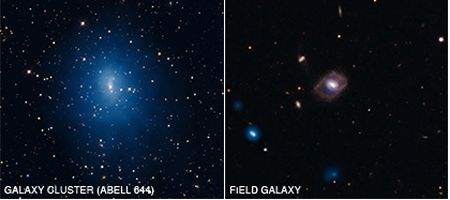A new study from NASA’s Chandra X-ray Observatory could tell us more about how black holes are created – and about the future of the black hole at the heart of our own galaxy.

For reasons not entirely understood, black holes display a wide variety of activity levels, from dormant to just lethargic practically hyper’, says study leader Daryl Haggard of the University of Washington and Northwestern University.
“We’ve found that only about one percent of galaxies with masses similar to the Milky Way contain supermassive black holes in their most active phase,” he said.
“Trying to figure out how many of these black holes are active at any time is important for understanding how black holes grow within galaxies and how this growth is affected by their environment.”
The Chandra Multiwavelength Project, or ChaMP, surveyed 30 square degrees on the sky, analyzing about 100,000 galaxies. Of those, about 1,600 were X-ray bright, signaling possible active galactic nuclei, or AGN, activity – in other words, a supermassive black hole.
The team found a striking correlation between the mass of the giant black holes and the mass of the central regions of their host galaxy, indicating that there’s a strong link between the growth of supermassive black holes and that of their host galaxies.
Another discovery was that a gradual decrease in the AGN fraction is seen over time since the Big Bang, implying that either the fuel supply or the fueling mechanism for the black holes is changing with time.
Our own Milky Way galaxy contains a supermassive black hole known as Sagittarius A* (Sgr A*). Although astronomers have witnessed some activity from Sgr A* over the years, it’s been at a very low level.
If the Milky Way follows the trends seen in the ChaMP survey, Sgr A* should be about a billion times brighter in X-rays for roughly one percent of the remaining lifetime of the sun.
If Sgr A* did become an AGN, it wouldn’t be a threat to life here on Earth – but would give a spectacular show at X-ray and radio wavelengths.
However, planets much closer to the center of the galaxy, or directly in the line of fire, would receive large and potentially damaging amounts of radiation.






